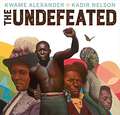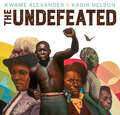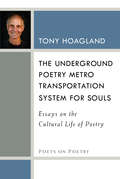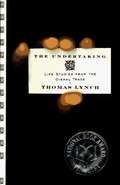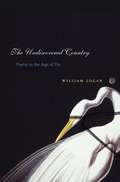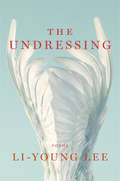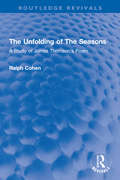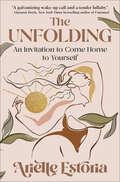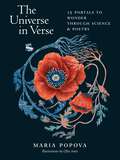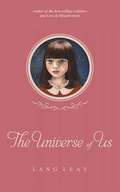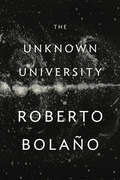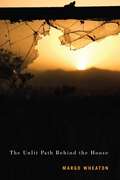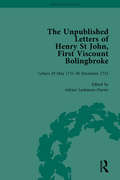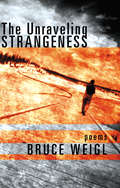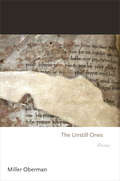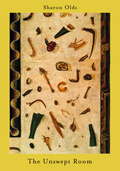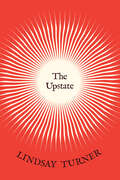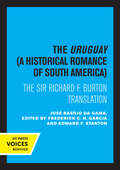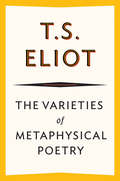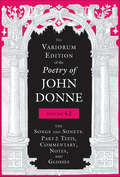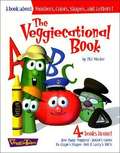- Table View
- List View
The Undefeated
by Kwame AlexanderThis book celebrates the black people who have reached the pinnacle of their profession despite their historical sufferings.
The Undefeated
by Kwame AlexanderWinner of the 2020 Caldecott Medal A 2020 Newbery Honor Book Winner of the 2020 Coretta Scott King Illustrator Award The Newbery Award-winning author of THE CROSSOVER pens an ode to black American triumph and tribulation, with art from a two-time Caldecott Honoree. Originally performed for ESPN's The Undefeated, this poem is a love letter to black life in the United States. It highlights the unspeakable trauma of slavery, the faith and fire of the civil rights movement, and the grit, passion, and perseverance of some of the world's greatest heroes. The text is also peppered with references to the words of Martin Luther King, Jr., Langston Hughes, Gwendolyn Brooks, and others, offering deeper insights into the accomplishments of the past, while bringing stark attention to the endurance and spirit of those surviving and thriving in the present. Robust back matter at the end provides valuable historical context and additional detail for those wishing to learn more.
The Underground Poetry Metro Transportation System for Souls: Essays on the Cultural Life of Poetry (Poets On Poetry)
by Tony HoaglandThe Underground Poetry Metro Transportation System for Souls collects 16 essays by late Tony Hoagland. Gathered by Hoagland himself into a volume for the Poets on Poetry series, these pieces grapple with an expansive range of poetic and cultural concerns—and the surprising and necessary knowledge to be found where they cross paths. His trademark humor and irony, at once approachable, thoughtful, and sophisticated, lead the way toward clear-eyed, sometimes difficult, considerations of contemporary American culture. Through his curiosity, he elevates the seemingly quotidian into a profound subject worthy of close consideration. Hoagland’s generosity of spirit imbues his work with empathy for experiences beyond his own, and his honesty allows him to turn a critical eye on himself and to acknowledge the limits of his understanding. This collection will be rewarding not just for readers of contemporary poetry, but for anyone who wants to step back, take a look at our American reality, and know we’ll be okay.
The Undertaking: Life Studies from the Dismal Trade
by Thomas LynchEssays on how the author coped when his father died and he took up the family business and responsibilities as an undertaker
The Undiscovered Country: Poetry in the Age of Tin
by William LoganWilliam Logan has been called both the "preeminent poet-critic of his generation" and the "most hated man in American poetry." For more than a quarter century, in the keen-witted and bare-knuckled reviews that have graced the New York Times Book Review, the Times Literary Supplement (London), and other journals, William Logan has delivered razor-sharp assessments of poets present and past. Logan, whom James Wolcott of Vanity Fair has praised as being "the best poetry critic in America," vividly assays the most memorable and most damning features of a poet's work. While his occasionally harsh judgments have raised some eyebrows and caused their share of controversy (a number of poets have offered to do him bodily harm), his readings offer the fresh and provocative perspectives of a passionate and uncompromising critic, unafraid to separate the tin from the gold.The longer essays in The Undiscovered Country explore a variety of poets who have shaped and shadowed contemporary verse, measuring the critical and textual traditions of Shakespeare's sonnets, Whitman's use of the American vernacular, the mystery of Marianne Moore, and Milton's invention of personality, as well as offering a thorough reconsideration of Robert Lowell and a groundbreaking analysis of Sylvia Plath's relationship to her father.Logan's unsparing "verse chronicles" present a survey of the successes and failures of contemporary verse. Neither a poet's tepid use of language nor lackadaisical ideas nor indulgence in grotesque sentimentality escapes this critic's eye. While railing against the blandness of much of today's poetry (and the critics who trumpet mediocre work), Logan also celebrates Paul Muldoon's high comedy, Anne Carson's quirky originality, Seamus Heaney's backward glances, Czeslaw Milosz's indictment of Polish poetry, and much more.Praise for Logan's previous works:Desperate Measures (2002)"When it comes to separating the serious from the fraudulent, the ambitious from the complacent, Logan has consistently shown us what is wheat and what is chaff.... The criticism we remember is neither savage nor mandarin.... There is no one in his generation more likely to write it than William Logan."—Adam Kirsch, Oxford AmericanReputations of the Tongue (1999)"Is there today a more stringent, caring reader of American poetry than William Logan? Reputations of the Tongue may, at moments, read harshly. But this edge is one of deeply considered and concerned authority. A poet-critic engages closely with his masters, with his peers, with those whom he regards as falling short. This collection is an adventure of sensibility."—George Steiner"William Logan's critical bedevilments-as well as his celebrations-are indispensable."—Bill Marx, Boston GlobeAll the Rage (1998)"William Logan's reviews are malpractice suits."—Dennis O'Driscoll, Verse"William Logan is the best practical critic around."—Christian Wiman, Poetry
The Undressing: Poems
by Li-Young LeeCelebrated poet Li-Young Lee returns with a breathtaking new volume about the violence of desire and the peace of love. The Undressing is a tonic for spiritual anemia; it attempts to uncover things hidden since the dawn of the world. Short of achieving that end, these mysterious, unassuming poems investigate the human violence and dispossession increasingly prevalent around the world, as well as the horrors the poet grew up with as a child of refugees. Lee draws from disparate sources, including the Old Testament, the Dao De Jing, and the music of the Wu Tang Clan. While the ostensive subjects of these layered, impassioned poems are wide-ranging, their driving engine is a burning need to understand our collective human mission.
The Unfolding of The Seasons: A Study of James Thomson's Poem (Routledge Revivals)
by Ralph CohenFirst published in 1970, The Unfolding of The Seasons provides an interpretation and evaluation of James Thomson’s poem The Seasons. Professor Cohen urges its reconsideration as a major Augustan poem, arguing that Thomson’s unity, diction and thought combine with a conception of man, nature and God which is poetically tenable and distinctive. The case for The Seasons as an important work of art depends upon its effectiveness as a moving vision of human experience, and Professor Cohen believes that many critics have not felt this effectiveness because they have misconceived Thomson’s vision and misunderstood his idiom. His study aims to persuade them to return to the poem and to examine it within the context of an Augustan tradition. Professor Cohen shows that Thomson’s great achievement is to have fashioned a conception which, by bringing nature to the forefront of his poem, became a new poetic way of defining human experience. Thomson was not the first nature poet in English, but he was the first to provide an effective idiom in which science, orthodox religion, natural description, and classical allusions blended to describe the glory, baseness and uncertainty of man’s earthly environment, holding forth the hope of heavenly love and wisdom. This study shows that Thomson found a personal idiom by means of which he created an artistic vision. It will appeal to those with an interest in English literature and in philosophy.
The Unfolding: An Invitation to Come Home to Yourself
by Arielle Estoria“A moving, fresh, unique poetry collection and a generous invitation into the mind of the poet. Both a galvanizing wake-up call and a tender lullaby.” — Glennon Doyle, author of the #1 New York Times bestseller Untamed“What I love about Arielle’s writing is that she takes readers on this journey step by step, filled with wisdom and grace. This book will help anyone seeking to unfold into their bloom.” — Morgan Harper Nichols, author of All Along You Were Blooming and Peace is a PracticeIn this beautiful collection of poems, essays, and meditations, Arielle Estoria tenderly reveals the places in her life where she has been broken open and mended back together in new ways. In doing so, she shows each of us how when we walk through our own process of “unfolding,” though it may be uncomfortable at times, there is light on the other side. Let these words guide your soul, and return home to the person you were always meant to be.
The Universe in Verse: 15 Portals to Wonder through Science & Poetry
by Maria PopovaIn this book of illustrated essays, Maria Popova, creator of The Marginalian, presents a celebration of the human search for truth and beauty through the lenses of science and poetry. Poetry and science, as Popova writes in her introduction, "are instruments for knowing the world more intimately and loving it more deeply." In 15 short essays on subjects ranging from the mystery of dark matter and the infinity of pi to the resilience of trees and the intelligence of octopuses, Popova tells the stories of scientific searching and discovery. These stories are interwoven with details from the very real and human lives of scientists—many of them women, many underrecognized—and poets inspired by the same questions and the beauty they reveal. Each essay is paired with a poem reflecting its subject by poets ranging from Emily Dickinson, W. H. Auden, and Edna St. Vincent Millay to Maya Angelou, Diane Ackerman, and Tracy K. Smith, and is stunningly illustrated by celebrated artist Ofra Amit. Together, they wake us to a "reality aglow with wonder."
The Universe of Us (Lang Leav Ser. #4)
by Lang LeavInternational best-selling author of Love & Misadventure, Lullabies (Goodreads Readers Choice Award), and Memories Lang Leav presents a completely new collection of poetry with a celestial theme in The Universe of Us. <P><P>Planets, stars, and constellations feature prominently in this beautiful, original poetry collection from Lang Leav. Inspired by the wonders of the universe, the best-selling poetess writes about love and loss, hope and hurt, being lost and found. Lang's poetry encompasses the breadth of emotions we all experience and evokes universal feelings with her skillfully crafted words.
The Unknown University
by Roberto Bolaño Laura HealyA deluxe edition of Bolano's complete poetry Perhaps surprisingly to some of his fiction fans, Roberto Bolano touted poetry as the superior art form, able to approach an infinity in which "you become infinitely small without disappearing." When asked, "What makes you believe you're a better poet than a novelist?" Bolano replied, "The poetry makes me blush less." The sum of his life's work in his preferred medium, The Unknown University is a showcase of Bolano's gift for freely crossing genres, with poems written in prose, stories in verse, and flashes of writing that can hardly be categorized. "Poetry," he believed, "is braver than anyone."
The Unlit Path Behind the House
by Margo WheatonThe day's an old room / stripped of its furniture; there are / never enough beds in winter. / By late afternoon, the shadows / are forming a blue inconsolable hall // as sparrows retreat to makeshift / cots of pine bark and eaves. // Even the parched marsh grass / has stilled, every blade / become an ear. Sensuous, atmospheric, and spare, The Unlit Path Behind the House collects poems that seek light in difficult places. In lines filled with an intense music, Margo Wheaton listens for the lyricism inside the day's blessings and catastrophes. Wheaton's poems sing at the intersections where public and private worlds collide: the steady cadence of a boy carrying an unconscious girl in his arms, the afternoon journey of a woman taking books to prisoners, the rhythmic breathing of a homeless man asleep in a parking lot. In these works, fireflies pulse in the dark, lovers clasp and unclasp, and street signs sing like Blake's angels. Deeply informed by the natural world, Wheaton's writing is marked by great meditative depth; while passionately engaged, these poems evoke a field of mystery and stillness. Whether exploring themes of isolation, spiritual dispossession, desire, or the sanctity of daily rituals, The Unlit Path Behind the House conveys our longing for home and the different ways we try to find it.
The Unlit Path Behind the House (The Hugh MacLennan Poetry Series #35)
by Margo WheatonA powerful new Maritime voice chronicles spiritual dispossession and desire, our longing for home, and the ways we find it.
The Unpublished Letters of Henry St John, First Viscount Bolingbroke Vol 2
by Mark Goldie Adrian Lashmore-DaviesHenry St John, First Viscount Bolingbroke (1678-1751) enjoyed varied political and literary careers. This five-volume edition draws together his letters. It includes a general introduction, headnotes, biographical index and a consolidated index. It is suitable for historians and literary scholars working in the eighteenth century.
The Unraveling Strangeness: Poems (Books That Changed the World)
by Bruce WeiglA collection of poems about returning home by the war veteran and Pulitzer Prize finalist who is &“one of the most important poets of our time&” (Carolyn Forché, Guggenheim Fellow, on Archeology of the Circle). The Unraveling Strangeness represents the record of a man in the middle of his life who comes back to his home after being away for twenty-five years. In these poems, we find odes to a disappearing New York City neighborhood and meditations on how national turmoil seeps into everyday consciousness. At stake in this journey is a rediscovery of deep and abiding connections to place, to family, and old friends. A two-time Pushcart Prize–winner, Bruce Weigl&’s collection The Abundance of Nothing was a finalist for the Pulitzer Prize. His poetry has been acclaimed by C. K. Williams as &“powerful and frightening, poems [that] force us to repudiate our comfortable uncertainties, our drowsy vagueness.&”
The Unstill Ones: Poems
by Miller ObermanAn exciting debut collection of original poems and translations from Old EnglishAn exciting debut collection of original poems and translations from Old English, The Unstill Ones takes readers into a timeless, shadow-filled world where new poems sound ancient, and ancient poems sound new. Award-winning scholar-poet Miller Oberman’s startlingly fresh translations of well-known and less familiar Old English poems often move between archaic and contemporary diction, while his original poems frequently draw on a compressed, tactile Old English lexicon and the powerful formal qualities of medieval verse.Shaped by Oberman’s scholarly training in poetry, medieval language, translation, and queer theory, these remarkable poems explore sites of damage and transformation, both new and ancient. “Wulf and Eadwacer,” a radical new translation of a thousand-year-old lyric, merges scholarly practice with a queer- and feminist-inspired rendering, while original poems such as “On Trans” draw lyrical connections between multiple processes of change and boundary crossing, from translation to transgender identity. Richly combining scholarly rigor, a finely tuned contemporary aesthetic, and an inventiveness that springs from a deep knowledge of the earliest forms of English, The Unstill Ones marks the emergence of a major new voice in poetry.
The Unswept Room
by Sharon OldsFrom Sharon Olds—a stunning new collection of poems that project a fresh spirit, a startling energy of language and counterpoint, and a moving, elegiac tone shot through with humor. From poems that erupt out of history and childhood to those that embody the nurturing of a new generation of children and the transformative power of marital love, Sharon Olds takes risks, writing boldly of physical, emotional, and spiritual sensations that are seldom the stuff of poetry. These are poems that strike for the heart, as Sharon Olds captures our imagination with unexpected wordplay, sprung rhythms, and the disquieting revelations of ordinary life. Writing at the peak of her powers, this greatly admired poet gives us her finest collection. From the Hardcover edition.
The Upstate (Phoenix Poets)
by Lindsay TurnerPoetry that sings of southern Appalachian beauty and crisis. Set in a landscape of red sunsets and wildfire smoke, Queen Anne’s lace on the roadsides, and toxic chemicals in the watershed, Lindsay Turner’s The Upstate is a book about southern Appalachia in a contemporary moment of change and development. Layering a personal lyric voice with a broader awareness of labor issues and political and ecological crises, The Upstate redefines a regional poetics as one attuned to national and global systems. These poems observe and emote, mourning acts of devastation and raging in their own quiet way against their continuation. The poems in The Upstate arise from moments of darkness and desperation, mobilizing a critical intelligence against the status quo of place and history, all while fiercely upholding belief in the role of poetry to affect these conditions. Turner’s poems weave spells around beloved places and people, yearning to shield them from destruction and to profess faith in the delicate beauties of the world at hand.
The Uruguay, A Historical Romance of South America: The Sir Richard F. Burton Translation
by José Basílio da GamaThis title is part of UC Press's Voices Revived program, which commemorates University of California Press’s mission to seek out and cultivate the brightest minds and give them voice, reach, and impact. Drawing on a backlist dating to 1893, Voices Revived makes high-quality, peer-reviewed scholarship accessible once again using print-on-demand technology. This title was originally published in 1982.
The Uses of the Body
by Deborah Landau"Landau's killer wit evokes Dorothy Parker crossed with Sylvia Plath--leaping spark after spark, growing to deadly dark fire. The Uses of the Body is her best book, its acerbic tone interspersed with lines of grave and startling beauty." --Los Angeles Times* "As freshly immediate as ever, award-winning poet Landau reveals that 'the uses of the body are manifold,' moving in four sections with a roughly chronological feel from wedding parties to flabby bodies around the pool to the realization 'But we already did everything'--all with an underlying sense of urgency: 'Life please explain.' As Landau explores her physical self and her sexuality, she's tart, witty, fluid, direct, and brutally honest, and her work can be appreciated by any reader."--Library Journal,starred review "Deborah Landau . . . is both confessional and direct, like Sylvia Plath and Allen Ginsberg. Her taut, elegant, highly controlled constructions meditate upon yearning and selfhood."--BooklistDeborah Landau's Uses of the Body presents the very specific challenges of womanhood. Her poems address what it means to be alive--right now--in a female body. She fills her poetry with compelling nouns: wine glasses, bridal gowns, and "books and teacups and ghosts." And what ghosts: underneath evocative images and poetic play, there's a moving, yearning mysticism.From "Mr and Mrs End of Suffering":The uses of the body are wake up.The uses of the body, illusion.The uses of the body. Rinse repeat.To make another body.September. Draw the blanket up.Lace your shoes.The major and minor passions. Sunlight. Hair.The basic pleasures. Tomatoes, Keats, meeting a smart man for a drink.The uses of the body.It is only a small house. It gets older.Its upper and lower.Its red and white trim.It's tempting to gloss over this part,so you won't really see me.Deborah Landau is the author of two books of poetry. She was educated at Stanford, Columbia, and Brown, where she earned her PhD. Currently she is the director of the NYU Creative Writing Program and lives in New York City.
The Value of Emily Dickinson
by Mary LoeffelholzThe Value of Emily Dickinson is the first compact introduction to Dickinson to focus primarily on her poems and why they have held and continue to hold such significance for readers. It addresses the question of literary value in light of current controversies dividing scholars, including those surrounding the critical issue of whether her writings are best appreciated as visual works of manuscript art or as rhymed and metered poems intended for the inner ear. Mary Loeffelholz deftly incorporates Dickinson's distinctive biography and her historical, religious, and cultural contexts into close readings, tracing the evolution of Dickinson's style. This volume - which considers not only the complex history of Dickinson's poems in print, but also their future in digital formats - will be an invaluable resource for undergraduate and graduate students seeking to better understand the importance of this seminal American poet.
The Value of Milton
by John LeonardIn The Value of Milton, leading critic John Leonard explores the writings of John Milton from his early poetry to his major prose. Milton's work includes one of the most difficult and challenging texts in the English literary canon, yet he remains impressively popular with general readers. Leonard demonstrates why Milton has enduring value for our own time, both as a defender of political liberty and as a poet of sublimity and terror who also exhibits moments of genuine humanity and compassion. A poet divided against himself, Milton offers different rewards to different readers. The Value of Milton examines not only the significance of his most celebrated verse but also the function of biblical allegory, classical culture, and the moods, voice and language that give Milton's writings their perennial appeal.
The Varieties of Metaphysical Poetry
by T. S. EliotThe famed series of Trinity College and Johns Hopkins lectures in which the Nobel Prize winner explored history, poetry, and philosophy. While a student at Harvard in the early years of the twentieth century, T. S. Eliot immersed himself in the verse of Dante, Donne, and the nineteenth-century French poet Jules Laforgue. His study of the relation of thought and feeling in these poets led Eliot, as a poet and critic living in London, to formulate an original theory of the poetry generally termed &“metaphysical&”—philosophical and intellectual poetry that revels in startlingly unconventional imagery. Eliot came to perceive a gradual &“disintegration of the intellect&” following three &“metaphysical moments&” of European civilization—the thirteenth, seventeenth, and nineteenth centuries. The theory is at once a provocative prism through which to view Western intellectual and literary history and an exceptional insight into Eliot&’s own intellectual development. This annotated edition includes the eight Clark Lectures on metaphysical poetry that Eliot delivered at Trinity College in Cambridge in 1926, and their revision and extension for his three Turnbull Lectures at Johns Hopkins University in Baltimore in 1933. They reveal in great depth the historical currents of poetry and philosophy that shaped Eliot&’s own metaphysical moment in the twentieth century.
The Variorum Edition of the Poetry of John Donne, Volume 4.2: The Songs and Sonets (The\variorum Edition Of The Poetry Of John Donne Ser.)
by John DonneThis volume, the ninth in the series of The Variorum Edition of the Poetry of John Donne, presents newly edited critical texts of 25 love lyrics. Based on an exhaustive study of the manuscripts and printed editions in which these poems have appeared, Volume 4.2 details the genealogical history of each poem, accompanied by a thorough prose discussion, as well as a General Textual Introduction of the Songs and Sonets collectively. The volume also presents a comprehensive digest of the commentary on these Songs and Sonets from Donne's time through 1999. Arranged chronologically within sections, the material for each poem is organized under various headings that complement the volume's companions, Volume 4.1 and Volume 4.3.
The Veggiecational Book: A Book About Numbers, Colors, Shapes And Letters! (VeggieTales)
by Phil VischerThe Veggiecational Book from Big Idea's "VeggieTales" cast of characters. This 4-in-1 volume includes the full text of Bob & Larry's ABC's, How Many Veggies?, Pa Grape's Shapes, and Junior's Colors.
